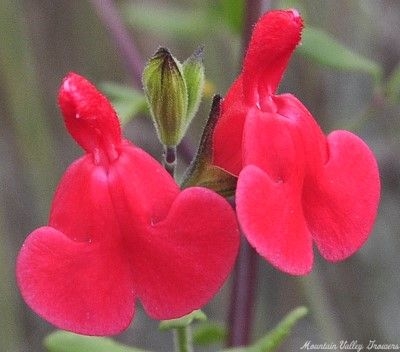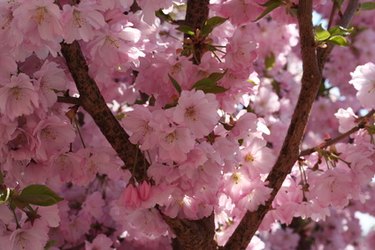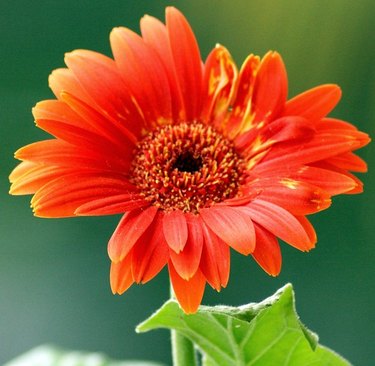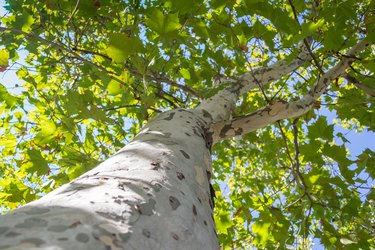Sage (Salvia officinalis, USDA plant hardiness zones 4 through 11) is as well-known for its historical use in medicine and rituals as its culinary use. As low-maintenance as it can be, like all plants, sage can still suffer and die if not properly cared for. If you catch it quickly enough, you may be able to fix a sage plant thats dying.
Growing baby sage (Salvia officinalis) is generally quite easy. But sometimes, even when you provide the best care, your sage plants struggle or die. Determining the cause is key to getting your sage thriving again. Let’s explore the most common reasons for baby sage plant decline.
Overwatering
Excessive watering is a prime culprit in baby sage plant death. Sage prefers drier soil and resentssaturated roots. Overwatering causes root rot and invites fungal diseases. How do you know if you’re overwatering? Look for these signs:
- Wilting, drooping leaves
- Yellowing leaves
- Mushy stems
- Foul odor from the soil
To remedy overwatering, stop watering completely. Allow the soil to dry out completely before watering again. Only water when the top inch of soil is dry. Improve drainage by amending soil with sand or perlite. And space watering farther apart – baby sage may only need water every 2-3 weeks.
Underwatering
While overwatering is more common, inadequate water can also cause baby sage plants to wilt and die. Signs of underwatering include:
- Leaves appearing dried out or scorched
- Drooping, limp foliage
- Stunted growth
Check soil moisture before watering. Baby sage needs a thorough soaking whenever the top 1-2 inches of soil dries out. Water slowly and deeply, not frequent light sprinklings. Consider using drip irrigation or self-watering pots to ensure consistent moisture. Mulching around plants also helps retain soil moisture.
Improper Light
Baby sage thrives in full sun – at least 6 hours daily. Without adequate light, growth will be stunted and leaves pale. On the other hand, if subjected to intense afternoon sun in hot climates, the leaves may scorch.
Monitor your sage plant’s exposure. Supplement with grow lights if needed. In intense sun locations, provide afternoon shade for protection. Adjusting lighting is an easy fix that can get your sage growing again.
Extreme Temperatures
Temperature stress can shock baby sage plants Hot sun combined with warm nights above 75°F can take a toll Signs include leaf scorching and sudden wilting. Cold snaps below 25°F can also damage or kill sage.
Move potted sage to sheltered areas during heat waves or cold spells. Use shade cloth or mini greenhouse tents as needed. Choose heat tolerant varieties like ‘Purpurascens’ for hot regions. In cooler zones plant sage where it gets winter protection.
Transplant Shock
When moving baby sage from nursery pots into the garden, it’s vulnerable to transplant shock. The disturbance to its roots causes stress. Signs are wilting leaves, leaf drop, and lack of new growth.
Reduce transplant shock by planting in the cool of evening or on cloudy days. Water thoroughly before and after planting. Consider using transplant fertilizer to stimulate new root development. Lastly, give transplants a few weeks to recover before exposing to harsh sun or wind.
Insufficient Drainage
Stagnant moisture from poor drainage suffocates roots and promotes diseases. Ensure sage pots and garden beds drain freely. Amend dense clay soil with compost or perlite to improve drainage. Avoid overcrowded plantings. For pots, use free-draining soilless mixes and include drainage holes. Remove excess water from drip trays.
Nutrient Deficiencies
Lack of nutrients causes yellowed, stunted growth in baby sage. These herbs need nutrient-rich soil with average fertility. Test soil and amend accordingly before planting. Use a balanced liquid fertilizer monthly or top-dress with compost in beds. For potted plants, feed with a water soluble fertilizer every 2-3 weeks during the growing season.
Pests or Diseases
Insects, mites, fungi and other pests can weaken baby sage over time. Common culprits include spider mites, aphids, whiteflies, powdery mildew, and rust. Check plants routinely for signs like spots, holes, webs or insects. Remove pests manually or use organic treatments promptly. Improve air circulation and avoid wetting foliage to combat diseases.
Extreme pH Levels
Baby sage prefers a near-neutral soil pH between 6.0-7.0. Overly acidic or alkaline conditions impair nutrient uptake, resulting in deficiencies. Test soil pH yearly and correct as needed with amendments like lime (to raise) or sulfur (to lower).
Excess Fertilizer
While nutrients are vital, over-fertilizing can damage sage roots and leaves. Burned leaf tips and margins indicate excess fertilizer. Always follow label rates. Rinse any spilled fertilizer from foliage. Replant sage in fresh soil annually to avoid buildup.
Harvesting Too Often
Frequent harvesting prevents baby sage from recovering properly. For healthy growth, cut no more than 1/3 of stems at one time. Allow at least 6-8 weeks of regrowth before harvesting again. Mistakes in harvesting time and frequency can stress plants.
Poor Drainage
Excess moisture around roots from poor drainage or heavy soil is a common sage killer. Improve drainage by planting in raised beds, on slopes or in containers with drainage holes. Amend dense clay soils generously with organic matter like compost. Allow soil to dry between waterings.
By identifying the specific factors involved and taking corrective action, you can get your ailing baby sage back to robust health. Pay close attention to proper planting, care and growing conditions for your climate. A healthy sage plant will thrive for many years with minimal fuss!

Why Is My Sage Plant Dying?
Video of the Day
When used in cooking, sage adds a warm, savory flavor; its the key to traditional Thanksgiving stuffing, for example. Sage is also used as an essential oil and an antiseptic, and has been used in holistic healing practices to improve brain function, oral health and nervous conditions.



Video of the Day
Its native to the Mediterranean region, but is a fairly hardy plant and is usually easy to grow in a variety of climates, especially if potted. While many people grow it for use as an herb, others enjoy the way it looks in a garden; sage has silvery-green leaves and can produce tall flowers in a number of shades.
Sage is mostly sensitive to conditions unlike its native environment. Sage is naturally drought-resistant and expects well-draining soil. If youve overwatered your sage, or if its in a pot or container that doesnt have good drainage, youll see the leaves start to wilt and droop. Too much rainfall will produce the same effect for an outside plant. If not corrected, this can eventually cause root rot.
If you dont think its water or drainage causing issues with your sage plant, it could be a fungus. If your leaves are wilting, turning yellow and falling off, you may have Verticillium wilt, caused by fungal disease. This fungus can spread to other nearby plants, so isolate your sage immediately if you think this is the cause. You can treat the soil with a fungicide, but in most cases, youre going to lose the plant.



Unbalanced soil conditions can cause poor growth in sage, and this includes over-fertilization as well as the more obvious under-fertilization. Again, sage thrives in sandy, loamy soils that are often thin in nutrients. You can shock your sage by over-fertilizing it, as an abundance of nitrogen will overload the plant, adversely affecting its foliage. Look for soft leaves that grow droopy or wilted almost immediately.
If none of these seem accurate, consider that your sage may be in a pot thats too small. Smaller pots heat up more quickly, making water evaporate; even though sage likes drier conditions, the plant will still need to have water available. If the sage has taken up most of the pot, it isnt going to be able to grow and will eventually fail.
Why Plants Wilt And Can They Be Saved? – Garden Quickie Episode 77
FAQ
Why did my sage plant suddenly die?
How do you rejuvenate a sage plant?
How often do you water baby sage?
